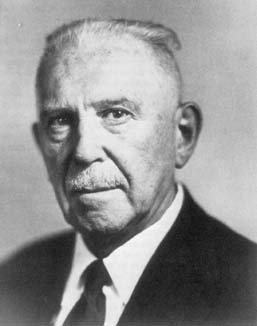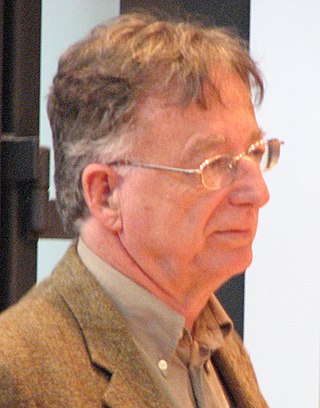
In mathematics, differential topology is the field dealing with the topological properties and smooth properties of smooth manifolds. In this sense differential topology is distinct from the closely related field of differential geometry, which concerns the geometric properties of smooth manifolds, including notions of size, distance, and rigid shape. By comparison differential topology is concerned with coarser properties, such as the number of holes in a manifold, its homotopy type, or the structure of its diffeomorphism group. Because many of these coarser properties may be captured algebraically, differential topology has strong links to algebraic topology.

John Willard Milnor is an American mathematician known for his work in differential topology, algebraic K-theory and low-dimensional holomorphic dynamical systems. Milnor is a distinguished professor at Stony Brook University and one of the five mathematicians to have won the Fields Medal, the Wolf Prize, and the Abel Prize.

Solomon Lefschetz was an American mathematician who did fundamental work on algebraic topology, its applications to algebraic geometry, and the theory of non-linear ordinary differential equations.

John Henry Constantine Whitehead FRS, known as Henry, was a British mathematician and was one of the founders of homotopy theory. He was born in Chennai, in India, and died in Princeton, New Jersey, in 1960.

Sergei Petrovich Novikov is a Soviet and Russian mathematician, noted for work in both algebraic topology and soliton theory. In 1970, he won the Fields Medal.
In an area of mathematics called differential topology, an exotic sphere is a differentiable manifold M that is homeomorphic but not diffeomorphic to the standard Euclidean n-sphere. That is, M is a sphere from the point of view of all its topological properties, but carrying a smooth structure that is not the familiar one.
The Novikov conjecture is one of the most important unsolved problems in topology. It is named for Sergei Novikov who originally posed the conjecture in 1965.
In mathematics, specifically in geometric topology, surgery theory is a collection of techniques used to produce one finite-dimensional manifold from another in a 'controlled' way, introduced by John Milnor (1961). Milnor called this technique surgery, while Andrew Wallace called it spherical modification. The "surgery" on a differentiable manifold M of dimension , could be described as removing an imbedded sphere of dimension p from M. Originally developed for differentiable manifolds, surgery techniques also apply to piecewise linear (PL-) and topological manifolds.

Dennis Parnell Sullivan is an American mathematician known for his work in algebraic topology, geometric topology, and dynamical systems. He holds the Albert Einstein Chair at the City University of New York Graduate Center and is a distinguished professor at Stony Brook University.
John Willard Morgan is an American mathematician known for his contributions to topology and geometry. He is a Professor Emeritus at Columbia University and a member of the Simons Center for Geometry and Physics at Stony Brook University.

Frank Stringfellow Quinn, III is an American mathematician and professor of mathematics at Virginia Polytechnic Institute and State University, specializing in geometric topology.
John Coleman Moore was an American mathematician. The Borel−Moore homology and Eilenberg–Moore spectral sequence are named after him.
Michel André Kervaire was a French mathematician who made significant contributions to topology and algebra.
In mathematics, the Kervaire invariant is an invariant of a framed -dimensional manifold that measures whether the manifold could be surgically converted into a sphere. This invariant evaluates to 0 if the manifold can be converted to a sphere, and 1 otherwise. This invariant was named after Michel Kervaire who built on work of Cahit Arf.

Michael Jerome Hopkins is an American mathematician known for work in algebraic topology.

Matthias Kreck is a German mathematician who works in the areas of Algebraic Topology and Differential topology. From 1994 to 2002 he was director of the Oberwolfach Research Institute for Mathematics and from October 2006 to September 2011 he was the director of the Hausdorff Center for Mathematics at the University of Bonn, where he is currently a professor.
Wu-Chung Hsiang is a Chinese-American mathematician, specializing in topology. Hsiang served as chairman of the Department of Mathematics at Princeton University from 1982 to 1985 and was one of the most influential topologists of the second half of the 20th century.
Paul Alexander Schweitzer, S. J., is an American mathematician, specializing in differential topology, geometric topology, and algebraic topology.
Ronald Alan Fintushel is an American mathematician, specializing in low-dimensional geometric topology and the mathematics of gauge theory.

Dan Burghelea is a Romanian-American mathematician, academic, and researcher. He is an Emeritus Professor of Mathematics at Ohio State University.










